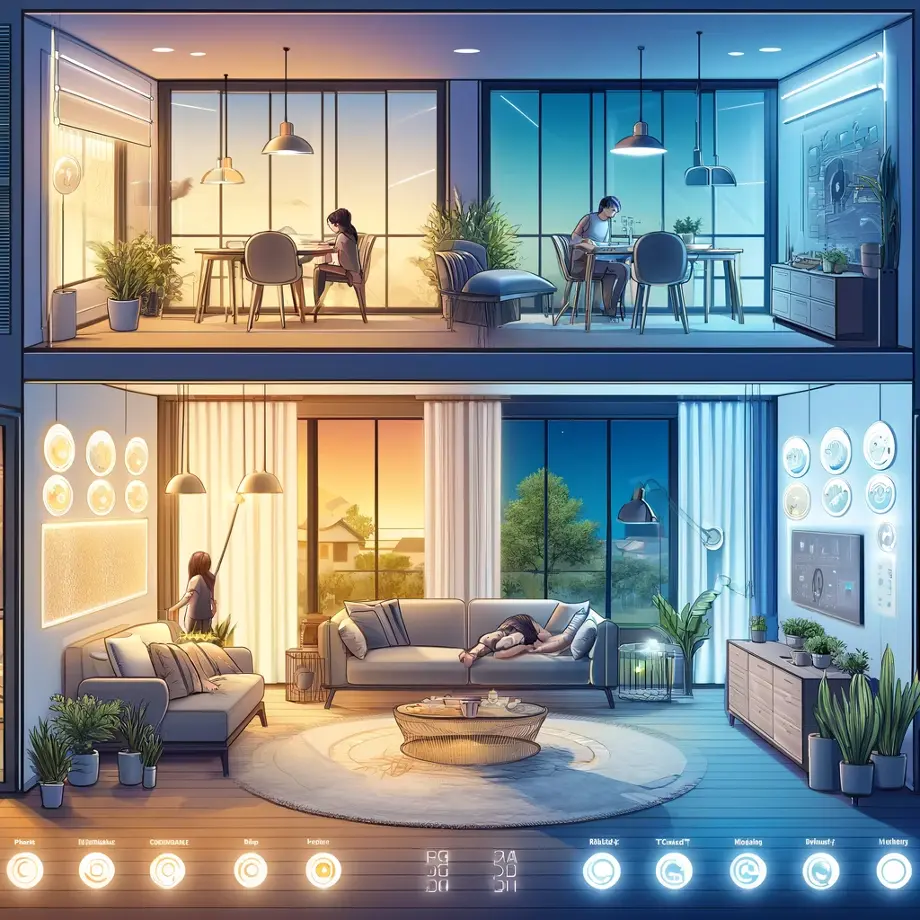Circadian Rhythm Lighting
Why is circadian human centric lighting with these advantages important?
~ Energy saving ~ Programmable ~ Flicker Free ~ Relax-Ready ~ Energizing-Ready ~

Health and Well-being
Regulates Sleep-Wake Cycles: Circadian lighting mimics natural daylight patterns, which helps regulate the body’s circadian rhythm. This regulation is crucial for maintaining healthy sleep-wake cycles, reducing insomnia, and improving overall sleep quality.
Enhances Mood and Reduces Stress: Proper lighting can positively impact mood and reduce stress levels. Exposure to appropriate light during the day can increase the production of serotonin, a hormone associated with mood elevation.
Boosts Mental Health: Consistent exposure to natural light patterns can help reduce the risk of depression and seasonal affective disorder (SAD). Light therapy is a common treatment for these conditions.
Productivity and Performance
Improves Focus and Alertness: During the day, especially in the morning, exposure to bright, blue-enriched light can enhance alertness and cognitive performance. This is particularly beneficial in workplaces and educational settings.
Supports Visual Comfort: Flicker-free lighting reduces eye strain and discomfort, which can be crucial for tasks requiring prolonged visual focus, such as reading or computer work.
Energy Efficiency and Sustainability
Energy Saving: Circadian lighting systems can be programmed to adjust brightness and color temperature throughout the day, optimizing energy usage. By aligning with natural daylight patterns, these systems can reduce the need for artificial lighting during daylight hours, leading to significant energy savings.
Programmable: These lighting systems can be automated to change intensity and color temperature according to the time of day, ensuring optimal light levels with minimal energy wastage. For example, lights can dim during peak daylight hours and brighten during early morning or late afternoon.
Relax-Ready and Energizing-Ready Modes: Programmable features allow for specific settings that can create an environment conducive to relaxation or activity. Relax-ready modes typically use warmer, dimmer light to promote relaxation and winding down, while energizing-ready modes use cooler, brighter light to stimulate alertness and activity.
Flicker-Free Lighting
Reduces Health Risks: Flicker-free lighting is essential to avoid the adverse health effects associated with light flicker, such as headaches, migraines, and even epileptic seizures in sensitive individuals.
Enhances Comfort and Productivity: By eliminating flicker, these lighting systems provide a more comfortable and visually stable environment, which can improve productivity and reduce visual fatigue.
Conclusion
Circadian human-centric lighting offers a holistic approach to lighting design that goes beyond mere illumination. By considering human biological rhythms and environmental impact, it creates healthier, more productive, and energy-efficient living and working spaces. This approach aligns with the growing emphasis on sustainability and well-being in modern design and technology.